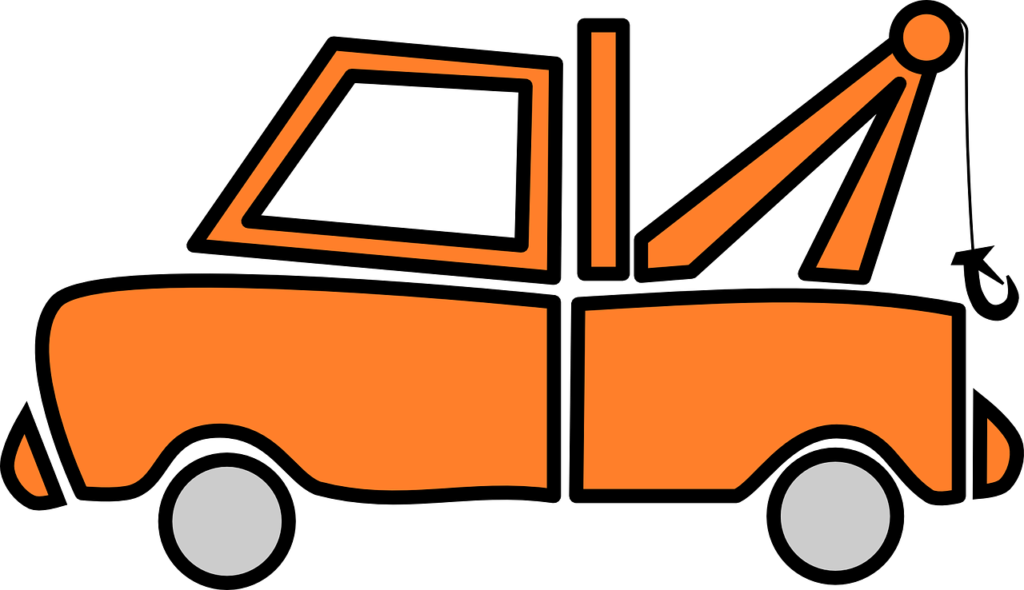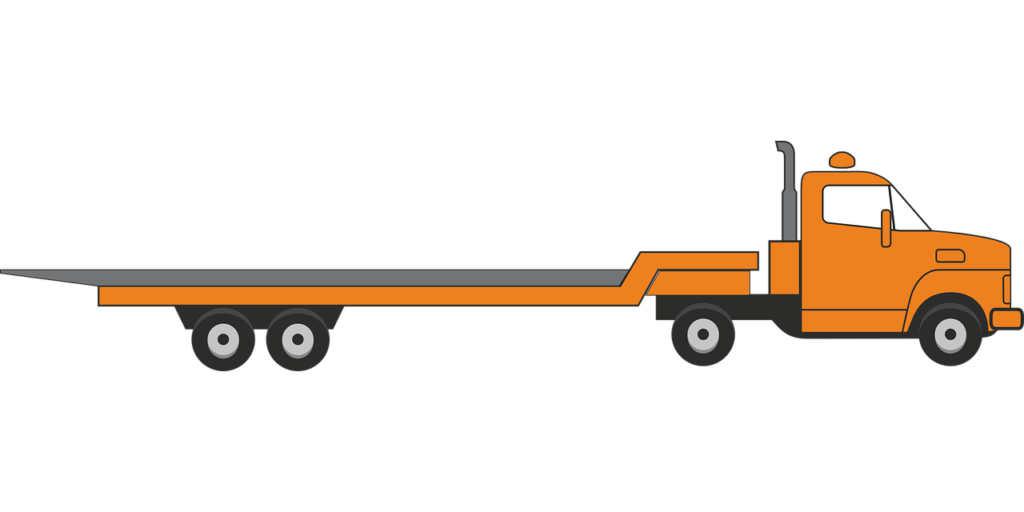Preparing your truck for towing is an essential step to ensure a safe and successful journey. Whether you’re planning to haul a heavy load or tow a trailer, taking the time to properly prepare your truck can prevent accidents and unexpected challenges along the way. In this article, we will explore some key steps you can take to get your truck ready for towing, ensuring the peace of mind and confidence you need on the road.

This image is property of pixabay.com.
Checking the Owner’s Manual
Before embarking on any towing journey, it is crucial to consult your truck’s owner’s manual. The owner’s manual provides valuable information regarding weight limits, towing capacity, and suitable hitch types. By understanding these guidelines, you can ensure that you are towing within the manufacturer’s recommended limits and using the appropriate equipment for your truck.
Understanding weight limits
One of the first considerations when preparing your truck for towing is understanding weight limits. Your truck has a specified Gross Vehicle Weight Rating (GVWR), which is the maximum weight it can safely carry, including passengers, cargo, and the tongue weight of the trailer. It is essential not to exceed this weight limit, as doing so can compromise the safety and performance of your truck and potentially result in accidents or damage.
Additionally, you must be aware of the Gross Combined Weight Rating (GCWR), which is the maximum weight of your truck and trailer combined. This rating takes into account the towing capacity of your truck, ensuring that it can handle the weight of the trailer and its contents. It is crucial to match the trailer’s weight with your truck’s towing capacity to maintain stability and control while towing.
Identifying towing capacity
Determining your truck’s towing capacity is another critical step in preparing for towing. The owner’s manual will provide specific information on your truck’s towing capacity, including the maximum weight it can tow safely. It is crucial to ensure that the weight of the trailer and its contents falls within this limit to avoid overloading your truck and risking damage to the vehicle or compromising safety on the road.
When identifying the towing capacity, remember to consider the type of trailer you intend to tow. Different types of trailers, such as conventional trailers, fifth-wheel trailers, or gooseneck trailers, may have different weight distributions and hitch requirements. Ensure your truck’s towing capacity matches the trailer’s needs for a safe and controlled towing experience.
Determining suitable hitch type
Selecting the appropriate hitch type is essential for safe and successful towing. The owner’s manual will help you determine the suitable hitch type for your truck, considering its towing capacity and the trailer’s requirements. There are various types of hitches, such as bumper hitches, gooseneck hitches, and fifth-wheel hitches, each designed for specific towing needs.
Ensure you choose a hitch that can handle the weight of your trailer, distribute the load evenly, and provide a secure connection between the truck and the trailer. Following the recommendations in the owner’s manual will help you select the right hitch type and ensure compatibility between your truck and the trailer you plan to tow.
Inspecting the Truck
Before hitting the road with a trailer in tow, it is crucial to thoroughly inspect your truck to ensure it is in proper working condition. A comprehensive inspection will help identify any issues that could compromise safety while towing. Pay close attention to the following areas:
Checking tire condition and pressure
Tire maintenance is essential for safe towing. Inspect each tire for any signs of wear, such as uneven tread or cracking. Replace any worn or damaged tires before towing to avoid blowouts or other tire-related incidents on the road. Additionally, verify the tire pressure matches the recommended levels specified in your truck’s owner’s manual, as improper tire pressure can affect handling and fuel efficiency.
Examining brake system
Proper brake functioning is critical for towing safety. Ensure that your truck’s brakes are in good condition, including the brake pads, calipers, and rotors. If you notice any signs of excessive wear or damage, have them inspected and replaced if necessary. It is also advisable to have a professional perform a brake fluid flush to ensure optimal braking performance while towing.
Verifying suspension components
The suspension system plays a crucial role in providing stability and control while towing. Inspect the suspension components, such as shocks, struts, and springs, for signs of wear or damage. Replace any worn or damaged components to maintain a stable ride and prevent excessive bouncing or swaying while towing. It is important to ensure that your truck’s suspension is capable of handling the additional weight of the trailer and its contents.
Securing the Trailer
Properly securing the trailer to your truck is essential for safe and controlled towing. Failing to do so can result in accidents, damage to the trailer or truck, or detachment of the trailer from the tow vehicle. Follow these steps to ensure a secure connection:
Attaching the coupler and safety chains
Start by attaching the trailer’s coupler to the hitch ball on your truck, ensuring it is fully engaged and locked in place. Secure the coupler by tightening the locking mechanism or using a coupler lock if available. Additionally, attach the safety chains to the appropriate attachment points on the truck’s hitch. The safety chains serve as a backup in case the trailer becomes detached from the hitch and help prevent the trailer from completely separating from the tow vehicle.
Connecting electrical wiring
To ensure proper functioning of the trailer’s electrical components, including brake lights and turn signals, connect the electrical wiring from the trailer to your truck. Check that the connections are secure and free from corrosion or damage. It is advisable to use a trailer wiring harness or adapter designed for your specific truck make and model to ensure compatibility and reliable electrical connections.
Ensuring trailer lights are functioning
Before towing, verify that all the trailer lights, including brake lights, turn signals, and hazard lights, are functioning correctly. Have someone stand behind the trailer while you activate each lighting function to ensure they are visible and synchronized with your truck’s signals. Replace any malfunctioning bulbs or fuses to ensure maximum visibility and communication with other drivers on the road.
Testing the Trailer Brake System
If your trailer is equipped with brakes, it is essential to test their functionality before towing. The trailer brake system assists your truck’s brakes by providing additional stopping power. Follow these steps to test the trailer brake system:
Checking brake controller settings
If your truck is equipped with a brake controller, adjust the settings according to your trailer’s weight and desired braking intensity. Consult your truck’s owner’s manual for specific instructions on adjusting the brake controller settings. It is crucial to find the right balance between your truck’s brakes and the trailer’s brakes for smooth and controlled stops while towing.
Verifying brake responsiveness
Once the trailer brake controller settings are adjusted, test the brake responsiveness by driving at a slow speed and applying the brakes. Pay attention to how quickly the trailer brakes engage and their ability to stop the trailer smoothly. If you notice any issues, such as delayed braking or uneven braking, have the trailer’s brake system inspected and serviced by a professional before towing.
Testing emergency breakaway system
The emergency breakaway system is a crucial safety feature in case the trailer becomes detached from the truck while in motion. Test the emergency breakaway system by pulling the pin or using the designated test switch to ensure it activates appropriately. If the emergency breakaway system does not function as intended, have it inspected and repaired to ensure its effectiveness in an emergency situation.

This image is property of pixabay.com.
Preparing the Load
Properly preparing and securing the load in your trailer is essential for safe and stable towing. Consider the following guidelines when preparing the load:
Securing cargo properly
Ensure that all cargo is securely fastened and properly distributed within the trailer. Use tie-down straps, cargo nets, or bungee cords to secure items and prevent them from shifting during transit. Pay attention to any weight distribution recommendations provided by the trailer manufacturer and distribute heavy items evenly throughout the trailer to maintain balance and stability.
Distributing load evenly
Proper load distribution is crucial for safe towing. Ideally, the weight should be evenly distributed between the front and rear axles of the trailer to prevent excessive swaying or fishtailing. Avoid placing too much weight at the front or rear of the trailer, as it can affect stability and steering control.
Ensuring visibility is not obstructed
Before towing, ensure that your view from the rearview mirror and side mirrors is not obstructed by the trailer or its cargo. Adjust the trailer load if necessary to maintain clear visibility. It is also advisable to use towing mirrors or extended side mirrors to enhance your field of vision and monitor the trailer’s position while driving.
Adjusting Mirrors
Properly adjusting your mirrors is crucial for maintaining optimal visibility while towing. Consider the following steps to optimize your mirror setup:
Optimizing rearview mirror angles
Adjust the rearview mirror to provide a clear view of the road behind your truck, reducing blind spots and enhancing situational awareness. Tilt the mirror slightly downward to expand your view of the trailer and its surroundings. This adjustment allows you to monitor the trailer’s position and make informed decisions while maneuvering or changing lanes.
Installing extended side mirrors
If your truck does not have factory-installed extended side mirrors, consider installing them to improve visibility alongside the trailer. Extended side mirrors provide a wider field of view, reducing blind spots and allowing better monitoring of adjacent traffic. Ensure that the extended side mirrors are securely attached and properly adjusted before towing.
Consider using towing mirrors
In some cases, towing mirrors may be necessary to provide an even greater view of the trailer and its surroundings. Towing mirrors, also known as clip-on mirrors or tow mirrors, can be attached to your truck’s existing mirrors to extend your field of vision. These mirrors are particularly useful when towing wider or longer trailers that extend beyond the width of your truck’s body.

This image is property of pixabay.com.
Bracing for Wind Resistance
When towing, wind resistance can affect the stability and fuel efficiency of your truck. Consider the following measures to reduce wind resistance and enhance towing performance:
Reducing drag by removing unnecessary accessories
Remove any unnecessary accessories or equipment that may increase wind resistance. Items such as roof racks, bike racks, or cargo carriers can create additional drag, negatively impacting fuel efficiency and towing stability. Minimizing wind resistance by removing any non-essential items will help optimize your truck’s performance while towing.
Installing wind deflectors
Wind deflectors, also known as air deflectors or cab spoilers, can help reduce wind resistance by redirecting airflow away from the trailer. These deflectors are typically installed on the roof or hood of the truck and create a smoother flow of air around the trailer, reducing drag and potentially improving fuel efficiency.
Using a weight distribution hitch
A weight distribution hitch can help distribute the weight of the trailer more evenly across the axles of the tow vehicle and trailer, reducing the strain on the rear suspension and enhancing stability. This type of hitch is particularly useful when towing heavier trailers. Consult your truck’s owner’s manual for recommendations on using a weight distribution hitch and ensure it is properly installed and adjusted before towing.
Checking Fluid Levels
Maintaining proper fluid levels in your truck is essential for optimal performance while towing. Consider the following fluid checks:
Inspecting engine oil
Check the engine oil level and quality to ensure it is within the recommended range and free from contaminants. Towing places additional strain on the engine, and maintaining adequate oil levels and regular oil changes are crucial for its longevity and performance. If needed, top up the engine oil or schedule an oil change before embarking on a towing journey.
Checking transmission fluid
The transmission plays a crucial role in transferring power from the engine to the wheels, making it essential to check the transmission fluid level and condition. Proper lubrication and cooling of the transmission are vital for smooth shifting and preventing overheating, especially under increased towing conditions. If necessary, add or replace transmission fluid following the manufacturer’s recommendations.
Verifying coolant level
Towing can put an additional strain on the engine’s cooling system, making it vital to verify the coolant level. Inspect the coolant reservoir and ensure it is filled to the recommended level, as indicated by the markings on the reservoir. The coolant helps regulate engine temperature and prevents overheating, which is particularly important while towing heavy loads or traveling in hot climates.

Testing Brakes and Lights
Before hitting the road, it is crucial to test the functioning of your truck’s brakes and lights to ensure maximum safety while towing. Consider the following steps:
Checking functioning brake lights
Have someone stand at the rear of your truck and operate the brake pedal while you observe the brake lights. Ensure that all brake lights are functioning correctly, including the high-mounted brake light, to alert other drivers of your intentions when braking. Replace any malfunctioning bulbs to maintain optimal visibility and communication with other motorists.
Ensuring turn signals are working
Verify that both the left and right turn signals, as well as the hazard lights, are functioning correctly. Activate each turn signal individually and visually inspect the corresponding lights to ensure they are properly illuminated. Replace any faulty bulbs or fuses to guarantee that your truck’s signaling system is fully operational while towing.
Verifying hazard lights
Lastly, test the hazard or emergency lights to ensure they are functional. Activate the hazard lights and inspect all indicators to ensure they are flashing correctly and visible from all angles. The hazard lights are essential for alerting other drivers to potential danger or emergencies, providing an additional safety feature while towing.
Practice and Familiarization
After completing all the necessary preparations, it is crucial to practice and familiarize yourself with towing before embarking on a long journey. Consider the following steps:
Taking short practice drives
Start by taking short practice drives in a safe and open area to get a feel for towing. Pay attention to the handling characteristics of your truck and the trailer, including acceleration, braking, and turning. Practice driving in different conditions, such as highways, city streets, and winding roads, to become comfortable with various scenarios you may encounter while towing.
Getting comfortable with turning and stopping
Towing a trailer requires adjusting your driving techniques, particularly when turning and stopping. Take the time to practice making turns, both left and right, ensuring you provide enough space for the trailer to follow the truck’s path. Additionally, practice braking techniques, allowing for the increased stopping distance required when towing. Gradually increase your speed and practice emergency stops to understand how your truck and the trailer respond in various braking situations.
Practicing backing up
Backing up with a trailer can be challenging, so it is essential to practice this maneuver. Find a suitable location with ample space, such as an empty parking lot or an open field, to practice backing up in different scenarios. Develop your technique for using the mirrors effectively and controlling the trailer’s path while moving in reverse. Patience and practice will help you gain confidence and proficiency in backing up with a trailer.
By following these comprehensive steps, consulting your truck’s owner’s manual, and practicing proper towing techniques, you can ensure that your truck is adequately prepared for towing and that you can confidently navigate the road with a trailer in tow. Proper preparation, regular maintenance, and safe driving practices will contribute to a successful and safe towing experience.

